Nestled in the heart of Mexico’s Yucatan Peninsula, Tulum is a tropical paradise famous for its azure waters, pristine beaches, and ancient Mayan ruins. But hidden beneath the lush jungle lies one of the region’s most breathtaking secrets: the Gran Cenote.
If you’re planning a visit to Tulum, visiting any number of the many cenotes in the area should be at the top of your must-do list. In this ultimate guide, I’ll share my personal experience exploring the Gran Cenote, offer essential tips, and help you make the most of your visit to this natural wonder.
What is a Cenote?
A cenote is a natural sinkhole or underground water-filled cave, thousands of them can be found in the Yucatan Peninsula. They are formed when limestone bedrock collapses, exposing the groundwater beneath. Cenotes are often interconnected through subterranean cave systems and serve as a vital source of freshwater in the region.
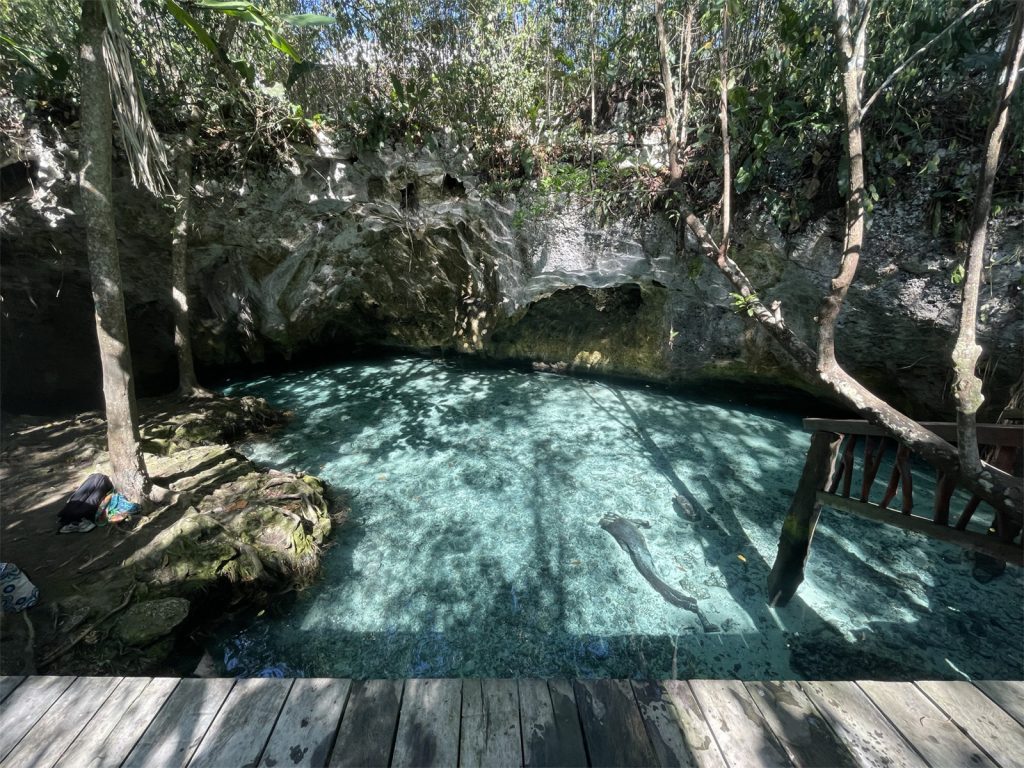
They hold cultural and historical significance for the ancient Mayan civilization, who considered them sacred and used them for various purposes, including rituals and water supply. Today, cenotes are popular tourist attractions, offering visitors the opportunity to swim, snorkel, and dive while exploring their unique geological formations and diverse ecosystems.
Getting There: The Road to Gran Cenote
The Gran Cenote is located approximately 4 kilometers (2.5 miles) northwest of Tulum’s city center. You can get there by car, bike, taxi, or colectivo (shared van).
Renting a bike is a popular and budget-friendly option, allowing you to enjoy a leisurely 20-minute ride along a flat, well-maintained road, and stopping at other attractions on the way.
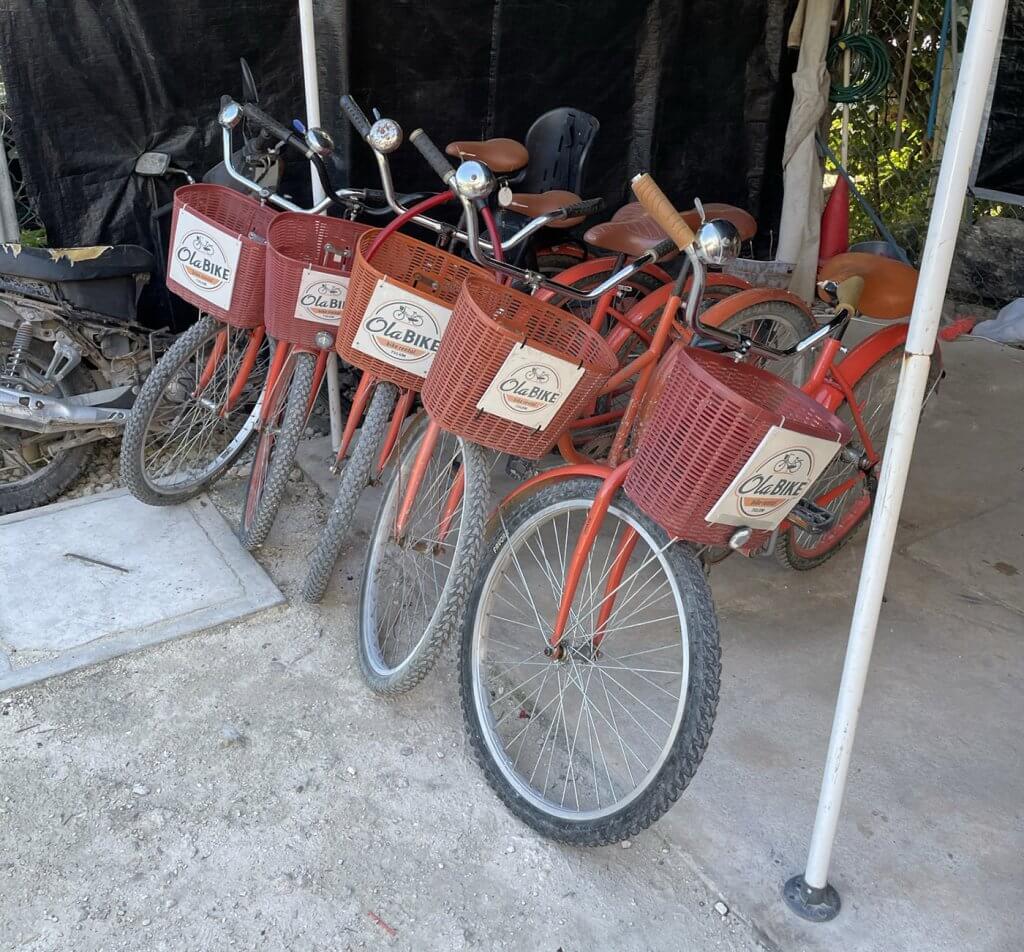
If you prefer a faster and more comfortable ride, consider hiring a taxi or hopping on a colectivo, which departs from downtown Tulum. A taxi ride will cost around 200-300 pesos ($10-$15 USD), while a colectivo is much cheaper at 40-50 pesos ($2.50-$3.00) per person.
You can find colectivos on the main street of Tulum, and at the corner of Avenida Coba right near the 7-11. Just be sure to ask the driver to drop you off at the Gran Cenote entrance.
Entrance Fees and Opening Hours
The Gran Cenote is open daily from 8:00 am to 4:45 pm and you can’t enter after 4:15pm. As of 2024, the entrance fee for adults is 500 pesos (about $27), while children between the ages of 4-12 are charged 150 pesos ($7.50).
Keep in mind that prices may change over time, so it’s always a good idea to check the latest information before you go.
Upon arrival, you’ll find a small ticket booth, restrooms, changing rooms, and lockers. The lockers are available for an additional fee of 50 pesos ($2.50) to store your belongings while you explore the cenote.
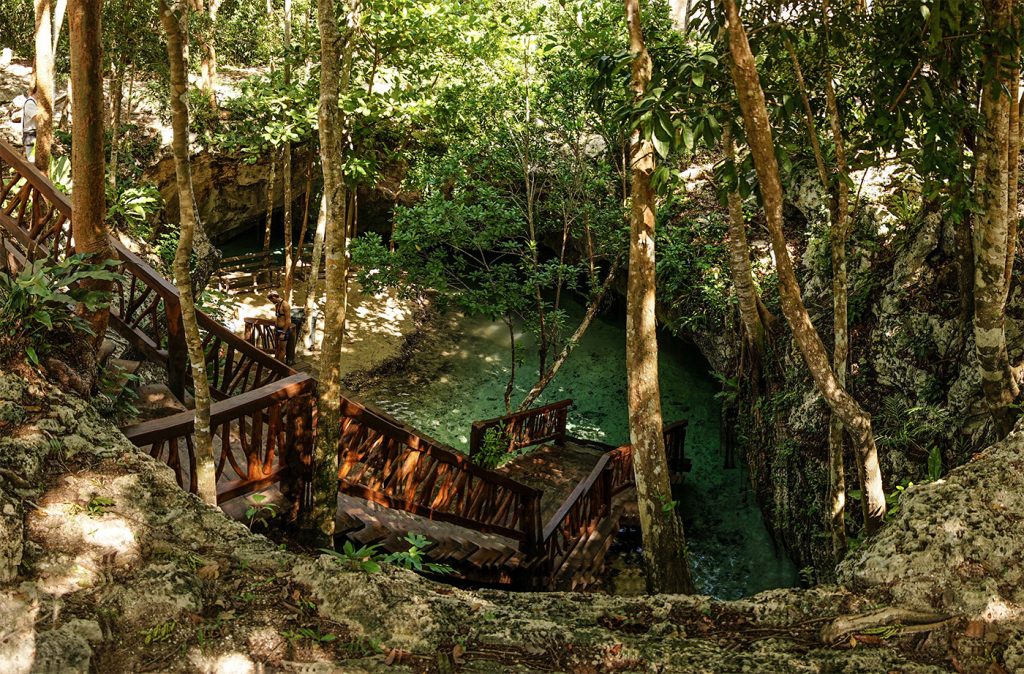
Exploring Gran Cenote
Once you’ve purchased your ticket, you’ll follow a wooden staircase down into the cenote, where you’ll be met with crystal-clear turquoise waters surrounded by lush vegetation and limestone formations.
The Gran Cenote is actually a semi-open cenote, meaning it has both open and partially enclosed areas. This unique combination creates an enchanting environment, with sunlight streaming through the openings, casting a magical glow on the water.
Swimming and Snorkeling
The Gran Cenote is perfect for swimming and snorkeling, with shallow and deep areas suitable for all skill levels. Life jackets (50 pesos) and snorkeling gear (100 pesos) are available for rent on-site, or you can bring your own. As you explore the underwater world, you’ll be amazed by the colorful fish, freshwater turtles, and the stunning stalactites and stalagmites.
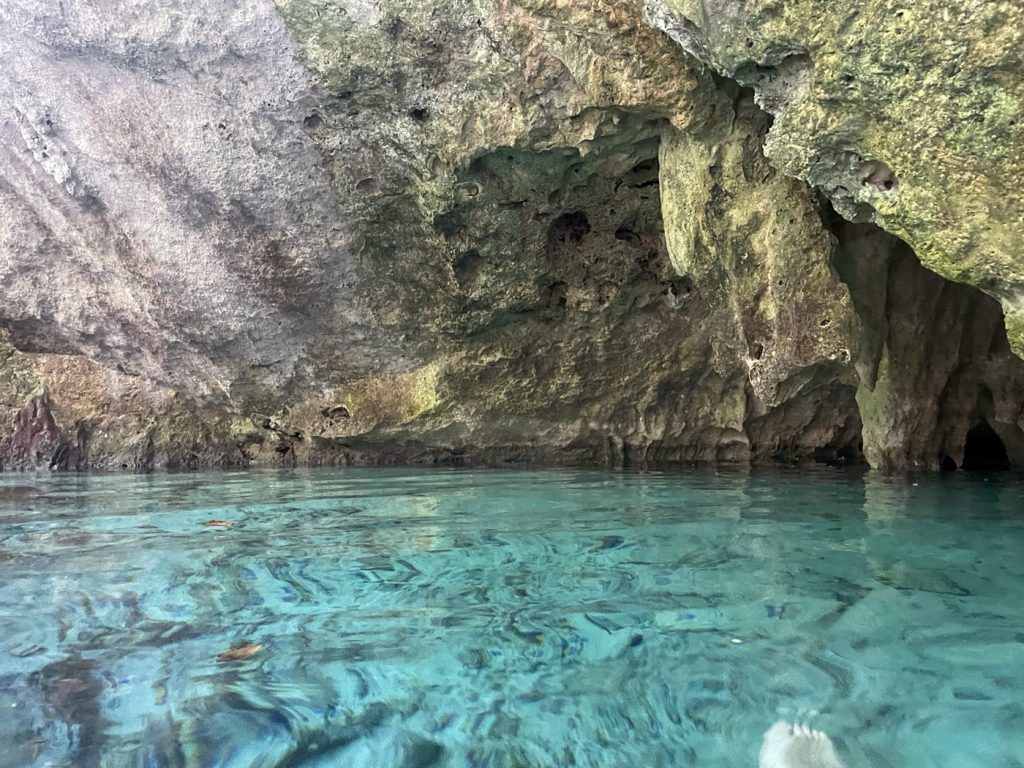
The cenote is connected to an underground cave system, and if you’re feeling adventurous, you can swim through the openings to access these hidden caverns. However, be aware that some areas are only accessible with a certified cave diving guide, so make sure to follow the guidelines and respect the cenote’s fragile ecosystem.
Cave Diving
For experienced cave divers, the Gran Cenote offers a thrilling opportunity to explore its underwater caverns. With a certified guide, you can venture into the depths of the cenote, discovering breathtaking limestone formations, fossilized coral, and even ancient Mayan artifacts.
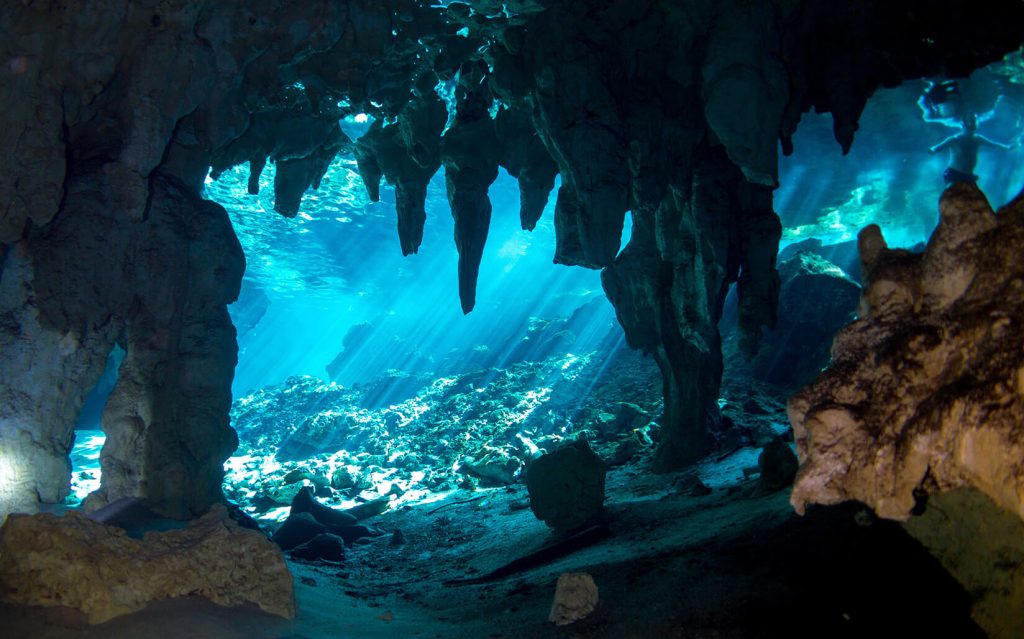
Keep in mind that cave diving is a specialized activity that requires proper training and certification. If you’re interested in this adventure, be sure to book a guided dive with a reputable local dive shop.
Relaxing on the Wooden Decks
After swimming and exploring the cenote, you might want to relax and soak up the sun on one of the wooden decks scattered around the cenote. These platforms offer a perfect spot to unwind, enjoy a picnic, or simply take in the beauty of your surroundings. Be sure to bring a towel, sunscreen, and some snacks to make your visit even more enjoyable.
Wildlife Watching
The Gran Cenote’s lush surroundings are home to a variety of local wildlife. Keep an eye out for the abundant tiny turtles swimming all over the cenote, iguanas basking in the sun, birds flitting through the trees, and even the occasional curious coati (a raccoon-like mammal native to the region).
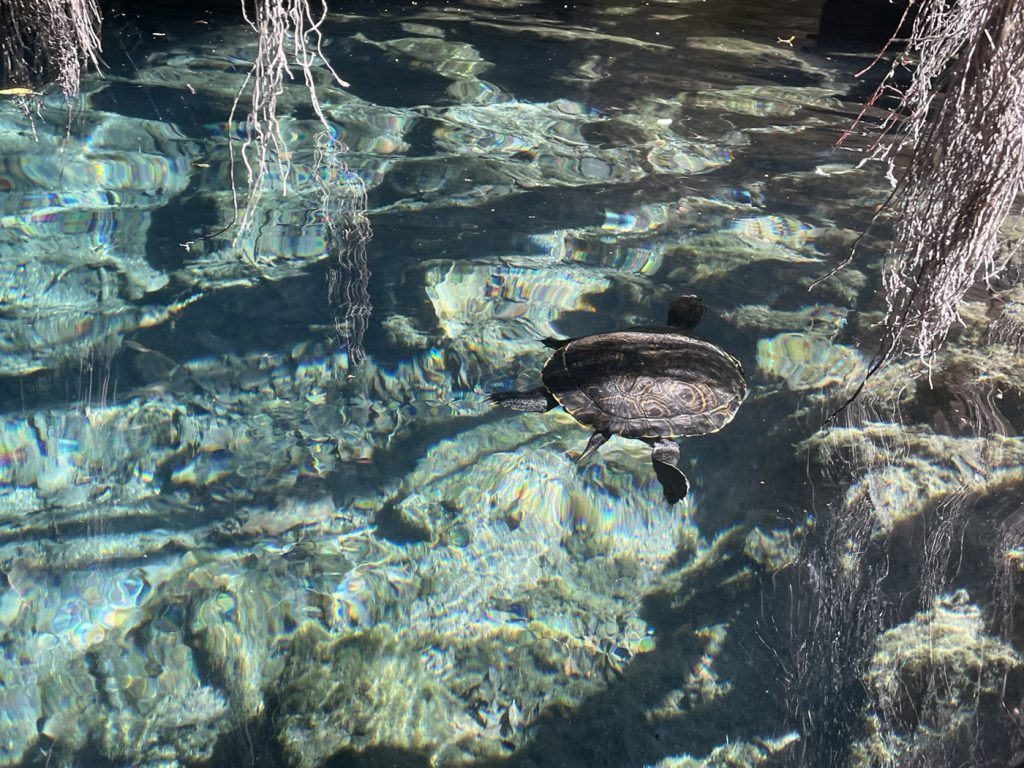
There are also hundreds of bats sleeping inside the cave you should definitely check out if you’re brave enough.Remember to respect the wildlife by not feeding them and maintaining a safe distance.
Photography Tips
The Gran Cenote is a photographer’s dream, with its vibrant colors, dramatic light, and otherworldly scenery. To capture the best shots, consider visiting earlier in the day, when the sun is lower and the crowds are thinner.
A waterproof camera or phone case is a must for underwater photography, and a polarizing filter can help reduce glare and bring out the stunning colors of the cenote.
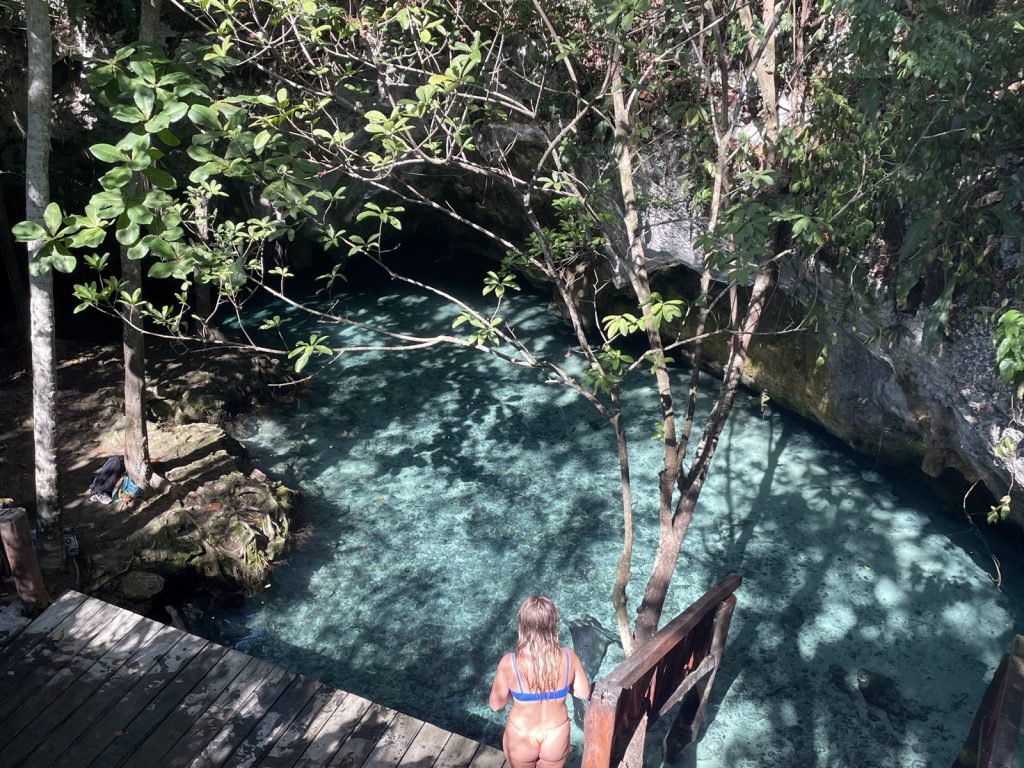
Eco-Friendly Tips
Preserving the delicate ecosystem of the cenote is crucial. Here are a few eco-friendly tips to keep in mind during your visit:
- Avoid wearing sunscreen or bug spray in the water, as the chemicals can harm the cenote’s delicate ecosystem. If you must use sun protection, opt for eco-friendly, biodegradable products.
- Don’t touch or disturb the limestone formations, as they are fragile and can take thousands of years to form.
- Refrain from feeding wildlife or littering. Dispose of your trash responsibly and recycle when possible.
- Stick to designated paths and follow the guidelines provided by the cenote staff.
Nearby Attractions
If you’re looking to explore more of Tulum’s natural and cultural attractions, consider adding these nearby sites to your itinerary:
- Tulum Ruins: Just a 15-minute drive from the Gran Cenote, these ancient Mayan ruins are perched on a cliff overlooking the Caribbean Sea. The Tulum Ruins are a must-see for history buffs and photography enthusiasts alike.
- Cenote Dos Ojos: Another stunning cenote located about a 20-minute drive from the Gran Cenote. Cenote Dos Ojos is famous for its crystal-clear waters and impressive underwater cave system.
- Sian Ka’an Biosphere Reserve: A UNESCO World Heritage Site, Sian Ka’an is a sprawling protected area encompassing tropical forests, mangroves, and barrier reefs. The reserve is home to diverse wildlife, including monkeys, jaguars, and sea turtles.
Conclusion
A visit to the Gran Cenote is an unforgettable experience that should be on every Tulum traveler’s bucket list. With its crystal-clear waters, enchanting atmosphere, and diverse activities, the Gran Cenote offers something for everyone.
By following the tips and advice in this ultimate guide, you’ll be well-prepared to make the most of your visit to this natural wonder. So grab your swimsuit and get ready to dive into the magical world of the Gran Cenote!












